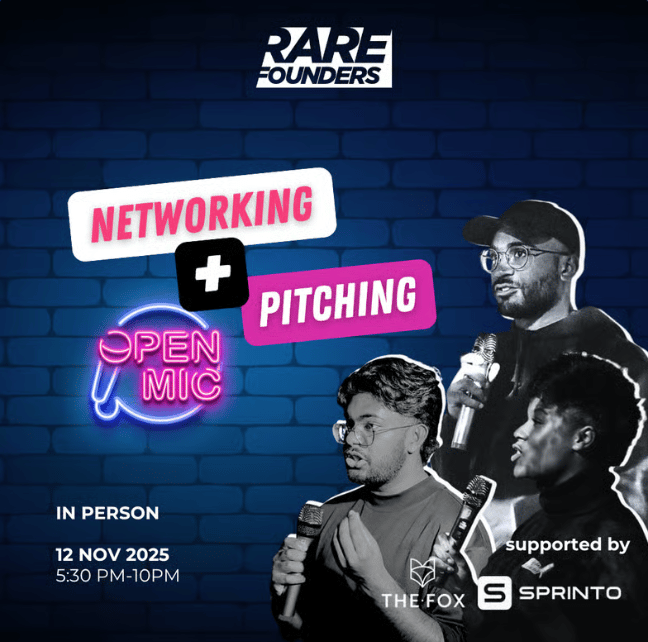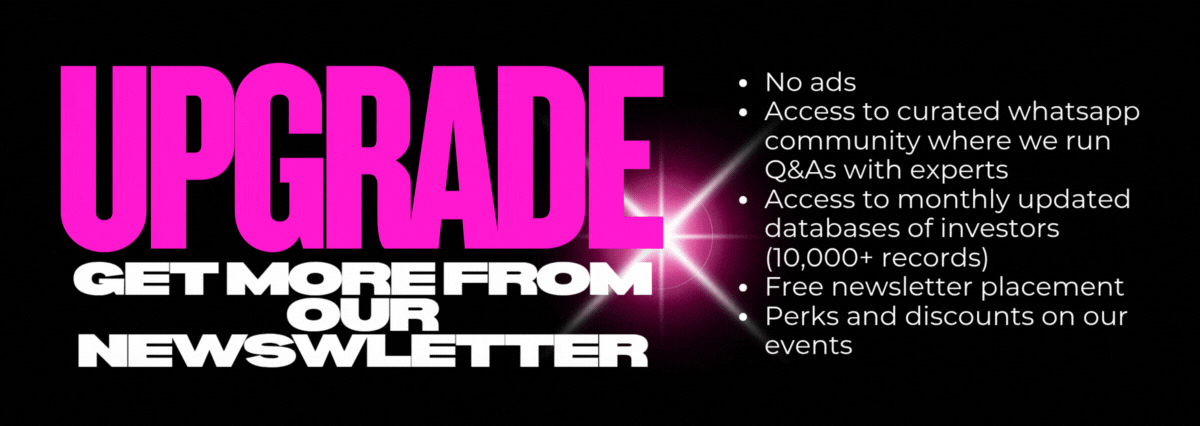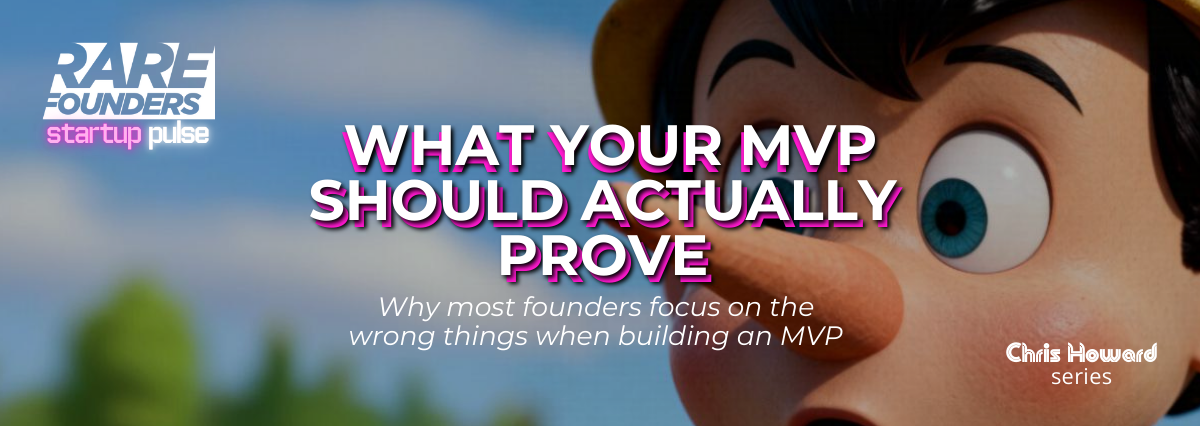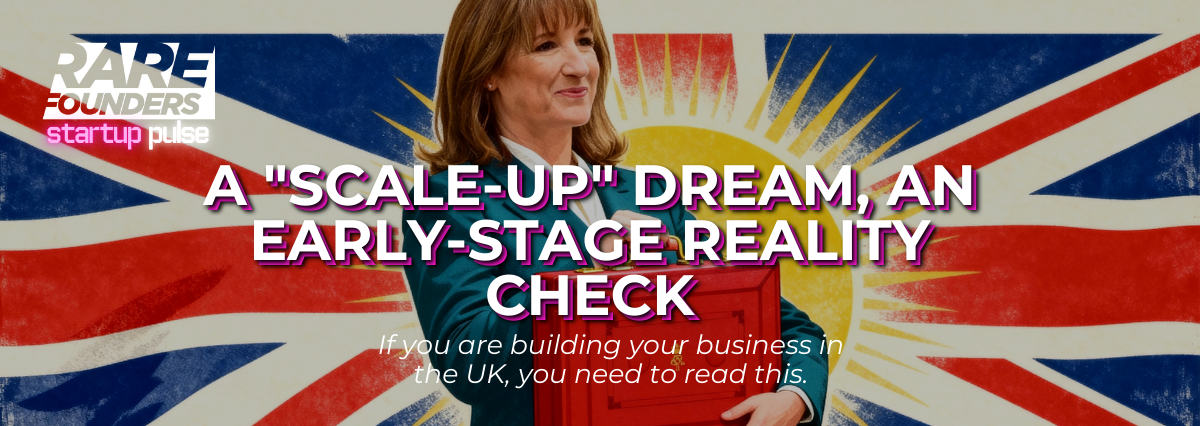
How to Expand Your Investor Network (Without Spamming the Internet)
If you’ve ever felt like you’ve pitched every investor you know and there’s no one left to reach out to — you’re not alone.
Almost every founder hits that moment where it feels like their network is “tapped out.”
The truth? It’s usually not.
Most of us stop too early. We think we’ve exhausted our options when, in reality, there are hundreds of second-degree connections sitting quietly in our extended LinkedIn graph just waiting to be discovered.
Step 1: Start with LinkedIn (Properly)
Chris Howard has raised 15 rounds in his career, and his advice is simple — use LinkedIn Sales Navigator. It’s the most underrated tool founders ignore when they’re raising.
Yes, it’s pricey. But there are ways around that:
💡 You can often get free trials or even access through an accelerator — and there are plenty of online “hacks” for getting Premium free for a year.
Once you’re in, start with your most significant connections — people who are well-connected, respected, or already in the startup scene.
Use them as your first-degree filter to search for everyone they know in venture capital or private equity.
You’re basically building a map of who you could reach through people you already know.
Step 2: Narrow the List Like a Pro
You’ll probably get a few hundred names in your search. That’s fine — it’s a good sign.
Now filter further:
Look for decision-makers (director, principal, partner).
Filter for people who are active on LinkedIn — lots of followers means they’re engaged and visible.
Create a shortlist of 10–15 people per connection who look like a great fit.
That’s your warm outreach list — people you can be introduced to through trust.
Step 3: The “Forwardable Email” (a.k.a. Double Opt-In)
Now it’s time to reach out to your connection and say something like:
“Hey, I hope you don’t mind — I looked through your LinkedIn and noticed you’re connected to a few people who might be great for me to speak with. I’ve listed them below — would you be okay introducing me to one or two of them if I send a short email you can forward?”
That’s it.
No pressure, no spam, and — most importantly — it respects their relationship with those investors.
This is what’s called a double opt-in introduction.
Your connection checks with the investor first (“Hey, would you like an intro to Vasily?”), and only if they say yes, they connect you.
This keeps everyone’s inbox clean and your reputation intact.
Why It Works
Because you’re borrowing social capital.
Instead of cold emailing strangers, you’re getting a warm intro through trust.
And here’s the best part — it works every time.
Chris says he’s done this for every single fundraise he’s ever run, and it’s never failed to generate new opportunities.
So before you tell yourself “I’ve run out of investors to pitch,” ask yourself — have you really, or have you just not mapped your second-degree network yet?
The Perfect Double Opt-In Email (That Actually Gets Forwarded)
Okay, now that you’ve found who you want to meet — let’s talk about how to get introduced the right way.
We’ve all been on the receiving end of those long, awkward emails that someone clearly expects us to forward.
Don’t be that person.
Here’s how to write a forwardable email your connection wants to send.
Step 1: Start With Context (Even if You Invent It)
Your first line is the most important.
Make it sound like the introduction idea came naturally from your conversation — not like you’ve been stalking their LinkedIn.
Example:
“Hi [Name], Great catching up yesterday — really appreciate your advice. You mentioned [Investor Name] could be a great person to speak to given what we’re building at [Your Startup]. I’d love to connect and see if there’s any overlap.”
Even if the conversation didn’t literally happen that way, it’s fine — as long as it feels natural and authentic.
The point is to signal warmth and relevance, not robotic sales outreach.
Step 2: Give Permission and Make It Easy
You want to make your connection’s job effortless.
Add something like:
“Would you mind connecting us? If it’s easier, feel free to forward this email and ask if they’re open to an intro. If so, I’ve included a short blurb below you can use.”
That’s the double opt-in part — you’re giving them a script, and they get to ask permission before looping you in.
Step 3: Include a Short, Punchy Blurb
This is the mini pitch that gives context.
Keep it short enough to fit on a phone screen.
If you’re fundraising:
“We’re building [1-liner about your startup]. We’ve just hit [traction or milestone]. Now raising [amount] to [goal].”
If it’s for partnerships, clients, or advisors, tailor it accordingly.
Focus on what’s interesting and specific, not generic buzzwords.
Chris’s golden rule:
“It doesn’t matter who you’re writing to — investors, clients, advisors — the formula stays the same.”
Step 4: Keep Your Personality In It
Don’t over-sanitize it. Be human.
Chris ends his emails with a casual line or two that sound like him — slightly chaotic, funny, and real.
It shows confidence without arrogance.
And if you accidentally swear in your message? It’s fine.
Authenticity beats perfection every time.
Why Double Opt-In Beats the “Cold DM” Game
We live in a world where everyone’s inbox is full of spammy “Hi, I saw your profile…” messages.
A double opt-in cuts through that noise.
It says: “I’m not trying to go around your relationships. I’m respecting them.”
It’s cleaner, it protects everyone’s reputation, and it’s 10x more effective than cold outreach.
Think of it as networking etiquette meets fundraising psychology.
Bonus Tips
Track introductions properly.
Don’t lose sight of who’s introduced you to whom. Use a CRM or even a simple Google Sheet.
Follow up thoughtfully.
Don’t push if someone doesn’t reply. Sometimes investors are busy — or just not the right fit.
Say thank you (and mean it).
A short note of appreciation to the person who made the intro goes a long way.
The Big Picture
Building an investor network isn’t about volume — it’s about trust and reputation.
One good introduction can lead to a chain of ten others.
Most founders think they need to “find new investors.”
In reality, they just need to activate the network they already have, the right way.
Start with your current contacts, use Sales Navigator to map second-degree investors, write a clean double opt-in email, and you’ll find your reach expanding much faster than you think.
Fundraising is hard, yes — but it’s also a numbers game built on relationships.
And relationships grow when you respect people’s time and make it easy for them to help you.
Final Thoughts
If you’ve hit that wall where it feels like your network is too small — try this process before giving up.
It’s one of those things that feels slow at first but compounds over time.
And if you really want to test it out, grab a coffee, open LinkedIn, and start mapping your 2nd-degree connections.
Chances are, you’re just one well-written double opt-in away from your next investor meeting.
✅ If this hit home, pass it on — there’s probably a founder in your circle who thinks they’ve already pitched every investor out there. And drop a comment if you’ve tried the double opt-in approach — the more we share what actually works, the easier fundraising becomes for everyone.
POLL TIME
(👉 Vote now — we’ll share the results in next week’s issue. All votes are anonymous.)
💬 Real talk — why do most founders struggle to build investor networks?
RAFE FOUNDERS EVENTS ❤️
Rare Founders
Open Mic Pitching and Networking
An energetic night where founders and innovators pitch, connect, and celebrate bold ideas in a lively, no-suit setting. Expect fast-paced pitches, spontaneous networking, and an atmosphere buzzing with creativity and community.
In-person event
The Fox, Excel Warehouse K, 2 Western Gateway, London E16 1DR, UK
Wed 12 Nov, 17:30 - 22:00 BST
Rare Founders
Co-Founder Matching Night
A fast-paced matchmaking night designed to connect founders, builders, and visionaries through AI-driven psychometric pairing and one-minute co-founder pitches. The event transforms traditional networking into a dynamic experience that sparks genuine partnerships and potential startup success stories.
In-person event
Blue Marlin Ibiza | London, 45 Curtain Rd, London, EC2A 3PT, UK
Mon 17 Nov, 17:00 - 21:30 BST
Rare Founders - building the bridge between founders and investors via regular in-person and online events, meetups, conferences.













